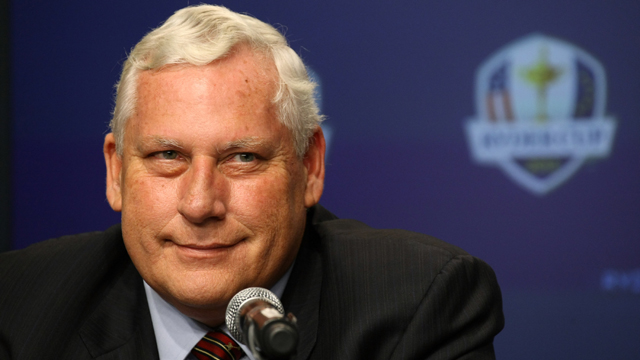NEWS
Eubanks: Growing the Game a Growing Concern

It’s budget month: the time of year when your local PGA golf professional is more likely to be studying a balance sheet than a backswing, his brow furrowed as he tries to make sense of this year and figure out how to keep the doors open for next.
For many, the numbers look grim.
Most golfers don’t want to think about their clubs as a business. They’re on the golf course to get away from that sort of thing. But numbers matter. If we don’t make growing the game everybody’s job, then it will be nobody’s job. And if it’s nobody’s job, the game could look a lot different at the end of next year than it does now.
According to a recent study by the National Golf Foundation, 400,000 fewer people play golf now than two years ago, and rounds-of-golf-played have been tumbling for five straight years.
The average course is 17% less busy now than it was a decade ago, and that’s with far fewer courses. Only 19 new golf courses opened in 2011, the lowest number since the early 1980s when interest rates were above 12% and inflation was at 10%. Meanwhile, 157 courses permanently shut their doors last year, another high point.
Why does that matter? Why should the average golfer care?
For starters, most of the abandoned courses are public or daily-fee facilities or mid-range, affordable private clubs. These are the incubators for new golfers, the places where kids take up the game for the first time or women take their beginner friends out for a fun nine-hole morning. Those courses are a vital starting point in the game’s food chain. When they vanish, the ripple effect is both devastating and long term.
“I think the middle of the market is going away,” said Whitney Crouse, the founder a golf course acquisition and management company called Affinity Golf Partners.
Crouse’s group manages a number of bankrupt courses for trustees and financial institutions, so he knows the problems first-hand. He believes the game is headed back to its roots, a time when golf was a niche sport for a select few.
“In the beginning of the game, you had the high-end and the low-end,” he said. “The middle part of the market got built in the boom years. I think there isn’t going to be a middle once this (current crisis) shakes out.”
He has good reason to be pessimistic. The cumulative net decrease in golf courses (openings minus closings) since 2006 is 358. That means there are 358 fewer courses now than there were six years ago even though the U.S. population continues to grow. Stand-alone driving ranges have evaporated even faster. Since 2000, the number of ranges in America has dropped 34%.
Fewer facilities means fewer places for newcomers to give golf a try; fewer places for guys to introduce their girlfriends to a bag of range balls and a beer; fewer outlets for sales of golf equipment; fewer options for the avid golfer; and fewer career opportunities for those who make their livings teaching and promoting the game.
But not everyone sees doom and gloom on the horizon. PGA of America president Allen Wronowski believes the worst is behind us and golf has a bright future ahead.
“If you think about tennis that went from 40 million players at its peak to 20 million players in a very short period of time, and you think about bowling that went from 20 million participants to about 3 million, and you look at how both have struggled to rebound, I think it’s a strong statement that golf held relatively steady during one of the worst periods in our lifetimes,” Wronowski said. “When you consider the impact in the 90s with the tax laws and what you were able to expense in terms of golf and club activities; and then you look at 2001 and the impact that it had, not just on the economy but on changes in people’s values, and then when you think about other sports becoming more and more specialized and year round - like soccer becoming a 10-month or 11-month season and Little League playing 65 games when you get into the travel leagues - and think about the number of hours a person is going to work, and the costs associated with golf; for the game to be down only 13% is, in my mind, a strong, positive statement.”
But Wronowski isn’t blind to the problems. Golf isn’t going to rebound to the halcyon of 2000 when 362 courses opened, almost one for every day of the year. Changes have to be made, and it will take a concerted effort on everyone’s part.
“Just going out with a group of beginning ladies, for example,” he said. “My wife and I took a group out recently and played three holes. It took awhile for them to get the hang of it and to understand things like how to rake a bunker and where to stand when someone was putting. But they had a fantastic time. We need more of those experiences in order to grow the game.”
And growing the game should be everyone’s priority.
A lot of goals will be set in the coming weeks for 2013. Breaking 90. Breaking 80. Checking another Top 100 course off the bucket list. But every golfer should also set a goal to introduce one new player to the game in the next 12 months. Maybe it’s a buddy from work, or a junior who is struggling to find a sport that he or she likes. Maybe it’s a spouse or neighbor. But find someone and say: “Hey, do you want to go to the golf course? Who knows, you might like it.”
Certainly, the future of the game depends on it.